I. Introduction to Windsor and Royal Borough Museum
Nestled within the historic town of Windsor, England, lies the Windsor and Royal Borough Museum (WRBM) – a captivating window into the rich and layered history of the region. Founded in 1951, the museum resides within the grand walls of Windsor Guildhall, a Grade I listed building itself steeped in historical significance. Its mission is simple yet profound: to preserve, interpret, and share the diverse stories of Windsor and the Royal Borough of Windsor & Maidenhead, inspiring curiosity and celebrating the community’s unique heritage.
Stepping into the WRBM is akin to embarking on a captivating journey through time. From prehistoric flint tools whispering tales of the area’s earliest inhabitants to meticulously crafted Victorian teacups hinting at bygone daily life, the museum’s collection offers a tangible connection to the past. But the WRBM is far from being a mere repository of relics. Interactive exhibits, engaging presentations, and insightful guided tours breathe life into the artefacts, making history accessible and captivating for visitors of all ages.
What truly sets the WRBM apart is its unwavering focus on local narratives. While the town’s proximity to Windsor Castle inevitably leads to encounters with royal history, the museum delves deeper, showcasing the lives and experiences of ordinary people who shaped the community’s character. Whether the intricate lacework made by local artisans or the poignant diaries documenting wartime struggles, the exhibits give voice to the collective narrative that defines Windsor’s identity.
Furthermore, the WRBM actively fosters a sense of community engagement. Regular events, workshops, and family activities encourage interaction and exploration, making the museum a vibrant cultural exchange and learning hub. Whether you’re a local resident seeking to deepen your understanding of your hometown or a curious visitor eager to unravel the secrets of this historic town, the WRBM promises an enriching and unforgettable experience.
In the following sections, we’ll explore the WRBM’s treasures, delving into its diverse collections, uncovering the stories behind the artefacts, and discovering the ongoing initiatives that keep the museum at the forefront of local history preservation and community engagement. So, join us as we unlock the fascinating world of the Windsor and Royal Borough Museum!
II. Exploring the Collections – A Journey Through Time

The Windsor and Royal Borough Museum’s (WRBM) collection unveils the fascinating narrative of Windsor, spanning millennia and revealing the town’s evolution through captivating artefacts and interactive exhibits. Let’s embark on a historical voyage, starting with the whispers of the distant past:
A. Prehistoric and Roman Windsor (c. 350,000 BC – 410 AD):
- Flint Tools Tell Tales: Discover a collection of handaxes and other flint tools crafted between 350,000 and 10,000 BC. These artefacts, unearthed from local sites like Braywick Road and Datchet, offer a glimpse into the lifestyles and technologies of prehistoric communities.
- Roman Footprints: The Roman conquest of Britain in 43 AD left its mark on Windsor. Explore Roman tiles, pottery shards, and coins, remnants of a thriving settlement, Pons Aelius, established around 70 AD.
Also, read:
- The Savill Garden Windsor: All You Need to Know
- Queen Elizabeth Gardens in Salisbury, England
- The Old Court Arts Centre, Windsor’s History & Today
B. Medieval Windsor (410 – 1485):
- The Shadow of Windsor Castle: The museum delves into the early history of Windsor Castle, showcasing fragments of Norman architecture and highlighting its transformation into a royal residence under William the Conqueror (1066-1087).
- Daily Life in the Borough: Step into the bustling streets of medieval Windsor through exhibits featuring everyday objects like clothing, tools, and religious artefacts. Discover how residents lived, worked, and worshipped amidst the growing prominence of the castle.
- Pilgrimage and Prosperity: Learn about the pivotal role of St. George’s Chapel, established in 1348, as a major pilgrimage site and its impact on the town’s economy and cultural landscape.
C. Tudor and Stuart Windsor (1485 – 1714):
- The Power of the Tudors: Immerse yourself in the Tudor dynasty’s influence on Windsor. Marvel at ornate portraits of Henry VIII and Elizabeth I and explore artefacts associated with their frequent visits to the castle.
- Shakespearean Connections: Discover the fascinating link between Windsor and the Bard himself. The museum houses a rare first-edition folio of Shakespeare’s plays, printed in 1623, reflecting the town’s association with renowned theatre companies.
- Civil War Echoes: The museum sheds light on the impact of the English Civil War (1642-1651) on Windsor, showcasing weaponry and everyday objects used during the siege of Windsor Castle.
- Restoration and Renewal: Witness the revival of Windsor under the Stuart monarchs, particularly Charles II (1660-1685), who invested heavily in restoring the castle to its former glory.
How to Get to the Windsor Castle from London
D. Georgian and Victorian Windsor (1714 – 1901):
- Elegant Entertainments: Explore the rise of leisure and entertainment in Georgian Windsor. Discover artefacts related to horse racing, popular at the Royal Ascot racecourse established in 1711, and fashionable tea sets reflecting the growing popularity of afternoon tea.
- Industrial Revolution: The 19th century saw Windsor transform into an industrial centre. The museum showcases artefacts from local breweries, brickworks, and furniture manufacturers, highlighting the changing economic landscape.
- Royal Connections Deepen: Queen Victoria’s reign (1837-1901) solidified Windsor’s association with the monarchy. The museum features personal items belonging to the Queen and explores her impact on the town’s development.
E. 20th and 21st Century Windsor (1901 – Present):
- World Wars and the Borough: The museum illuminates Windsor’s experiences during World War I and II, showcasing poignant letters, war memorabilia, and stories of local residents who served and sacrificed.
- Post-War Transformation: Explore the evolution of Windsor in the latter half of the 20th century, examining the decline of traditional industries and the rise of tourism and service sectors.
- Modern-Day Windsor: The museum concludes its journey with a glimpse into contemporary Windsor, showcasing artefacts and exhibits reflecting the town’s diverse cultural landscape and ongoing development.
Remember, this is just a glimpse into the vast and captivating collection of the WRBM.
Also, read:
- Windsor Castle Opening Times: Everything You Need to Know.
- Windsor Castle Tickets: A Proven Comprehensive Guide.
- Windsor Castle Changing of the Guard: Where History Coming Alive.
- Windsor Castle Tour: A Comprehensive and Best Guide.
- Windsor Castle Tickets Advantage Card: Know Everything.
III. Special Exhibitions and Programs
The Windsor and Royal Borough Museum (WRBM) goes beyond static displays, offering dynamic and engaging experiences through its ever-evolving special exhibitions and events program. Let’s peek into this vibrant dimension of the museum:
A. Special Exhibitions:
These temporary exhibitions delve deeper into specific themes, periods, or individuals, offering fresh perspectives and fostering deeper engagement with local history.
- Recent Highlights: Explore past exhibitions like “From Rags to Riches: Stories of Fashion in Windsor” (2022), which showcased clothing and accessories from different eras, or “Wartime Windsor: The Home Front Experience” (2021), which shed light on local experiences during World War II.
- Upcoming Exhibitions: Stay tuned for exciting upcoming exhibitions like “Art Deco Windsor: Glamour and Innovation” (2024), showcasing the town’s vibrant Art Deco heritage, or “Voices of Windsor: Untold Stories from the Archives” (2025), featuring personal narratives rarely seen before.
B. Educational Programs:
The WRBM actively engages with diverse audiences through a variety of educational programs:
- School Visits: Tailored workshops and guided tours bring history to life for students of all ages, exploring themes like everyday life in medieval Windsor or the impact of the Industrial Revolution.
- Family Activities: Interactive activities like dressing up in historical costumes, making Roman mosaics, or participating in archaeological digs spark curiosity and make learning fun for families.
- Talks and Lectures: Renowned historians, archaeologists, and experts conduct regular talks and lectures on various topics related to Windsor’s history, art, and culture.
C. Community Events:
The WRBM fosters a sense of community by hosting regular events that celebrate local talent and foster cultural exchange:
- Artist Exhibitions: The museum’s gallery space provides a platform for local artists to showcase their work, fostering dialogue and appreciation for contemporary art within the community.
- Heritage Festivals: Events like the annual “Windsor History Festival” offer a rich program of talks, workshops, and performances that immerse residents and visitors in the town’s vibrant history.
- Community Collaborations: The WRBM actively collaborates with local schools, community groups, and organizations to develop joint initiatives and engage diverse audiences with history.
D. Accessibility Initiatives:
The WRBM strives to make its exhibitions and programs accessible to everyone:
- Sensory Kits: Tactile objects, audio descriptions, and large print resources are available for visitors with sensory impairments.
- British Sign Language Tours: Guided tours in British Sign Language are offered upon request, ensuring inclusivity for deaf and hard-of-hearing audiences.
- Family-Friendly Facilities: Dedicated play areas, changing rooms, and accessible toilets make the museum welcoming for families with young children.
By continually innovating and engaging with the community, the WRBM ensures that history remains relevant and accessible, fostering a sense of shared identity and appreciation for the rich tapestry of Windsor’s past, present, and future.
Also, read:
- The Windsor Castle Fire 1992: A Historical Catastrophe.
- State Apartments at Windsor Castle: An Ultimate Guide.
- St. George’s Chapel at Windsor Castle in History & Today.
- Queen Mary’s Dollhouse at Windsor Castle.
- Windsor Great Park: A Legacy of History, Nature, and Royal Heritage.
IV. Behind the Scenes: The Museum’s Operations

Beyond the public-facing exhibits and engaging programs, the Windsor and Royal Borough Museum (WRBM) hums with activity thanks to a dedicated team of professionals passionate about safeguarding the region’s heritage. Let’s take a peek behind the scenes and unveil the hidden workings that keep the museum thriving:
A. Conservation and Curation:
- Guardians of History: A team of conservators meticulously maintains the museum’s vast collection, employing specialized techniques to prevent deterioration and ensure artefacts remain accessible for future generations.
- Curatorial Expertise: Curators conduct in-depth research, develop new exhibits, and interpret the collection’s significance, weaving narratives that connect objects to broader historical contexts.
- Digital Archiving: WRBM embraces cutting-edge technology to digitally archive photographs, documents, and other materials, ensuring long-term preservation and accessibility for researchers and the public.
B. Diverse Departments:
- Exhibition Design: From conceptualizing themes to crafting engaging displays, skilled designers create immersive and informative exhibits that resonate with diverse audiences.
- Education and Outreach: Dedicated educators develop engaging programs for schools, families, and communities, fostering a love for history and promoting lifelong learning.
- Marketing and Communications: The team connects with the public through various channels, raising awareness about the museum’s offerings and attracting new visitors.
C. Collaboration and Partnerships:
- Local Connections: The WRBM actively collaborates with local historians, archaeologists, and community organizations to ensure diverse perspectives are represented and enrich the museum’s narratives.
- Academic Partnerships: Collaborations with universities and research institutions foster knowledge exchange and support innovative research projects related to Windsor’s history.
- Funding and Fundraising: Grants, donations, and fundraising initiatives ensure the museum’s sustainability and enable the development of new exhibitions and programs.
D. Volunteer Network:
A dedicated group of volunteers contributes invaluable time and skills to various museum operations, from assisting with public events to supporting research projects. Their passionate contributions enrich the museum experience and strengthen community engagement.
E. Looking Ahead:
The WRBM actively pursues innovation and expansion, with ongoing projects dedicated to:
- Digital Expansion: Developing online resources and interactive exhibits to enhance accessibility and reach wider audiences.
- Collection Development: Continuously acquiring new artefacts and archival materials to reflect the evolving story of Windsor.
- Community Engagement: Fostering deeper connections with residents through participatory projects and collaborative initiatives.
By nurturing a vibrant community of staff, volunteers, and collaborators, the WRBM ensures its vital role in preserving Windsor’s heritage and inspiring future generations to connect with their past.
Also, read:
- Eton College Windsor: A Legacy of Excellence
- Frogmore House Windsor: A Royal Retreat Through Centuries
- The Long Walk, Windsor Castle Through Time
- Windsor Guildhall Near Windsor Castle: Past and Today
- Windsor Castle Stables
- The Royal Collection Trust
V. The Future of the WRBM

Standing at the intersection of history and community, the Windsor and Royal Borough Museum (WRBM) focuses on the past it embodies and the future it actively shapes. Let’s explore the museum’s vision and the exciting initiatives that promise to keep its legacy alive and relevant in the years to come:
A. Building on Legacy:
The WRBM recognizes its responsibility to safeguard its treasured collection while ensuring its stories resonate with future generations. This commitment translates into:
- Expanding Accessibility: Initiatives like multilingual resources, virtual tours, and tactile exhibits will continue to remove barriers and ensure everyone can engage with the museum’s treasures.
- Digital Transformation: Embracing technological advancements, the WRBM plans to develop further online collections, interactive learning modules, and digital exhibits, fostering wider engagement and knowledge dissemination.
- Community Integration: The museum envisions deeper partnerships with schools, cultural organizations, and diverse community groups, ensuring its narrative reflects the evolving tapestry of Windsor and its people.
B. A Hub for Learning and Inspiration:
Looking ahead, the WRBM aims to become a dynamic hub for learning and cultural exchange, offering:
- Lifelong Learning Opportunities: Expanding educational programs for all age groups, including adult learning workshops, online courses, and citizen science projects, will foster a culture of continuous learning and historical exploration.
- Collaborative Creativity: The museum plans to cultivate spaces for artistic expression, hosting artist residencies, community art projects, and exhibitions showcasing local talent, further enriching the town’s cultural landscape.
- Engaging Dialogue: By hosting forums, discussions, and workshops on contemporary issues with historical context, the WRBM plans to encourage critical thinking and spark meaningful conversations about the past’s relevance in shaping the present and future.
C. Embracing Change and Innovation:
Recognizing the dynamic nature of history and community needs, the WRBM is committed to:
- Collection Growth: The museum continuously seeks new acquisitions that reflect the evolving story of Windsor, including diverse voices and experiences often overlooked in the past.
- Adaptive Exhibitions: Moving beyond static displays, the WRBM plans to create interactive and immersive exhibits that respond to contemporary interests and utilize innovative technologies.
- Sustainability Initiatives: The museum seeks to implement environmentally friendly practices throughout its operations, ensuring responsible stewardship of resources for future generations.
D. A Beacon for the Future:
In conclusion, the WRBM envisions itself as a repository of the past and a vibrant space for learning, dialogue, and creativity. By nurturing its collections, embracing new technologies, and fostering deep community connections, the museum aims to remain a beacon for understanding the past, engaging with the present, and shaping a future inspired by its rich and diverse heritage. For more information about the WRBM’s exciting future plans and initiatives, visit their website or contact them directly.
The WRBM’s journey, spanning over seven decades, is a testament to its enduring significance in the life of Windsor and its residents. As it steps into the future, the museum promises to be a window to the past and a doorway to a shared future, enriched by a deeper understanding of where we come from and where we might go together.
For more information, visit https://www.rbwm.gov.uk/home/leisure-and-culture/museum/about-museum




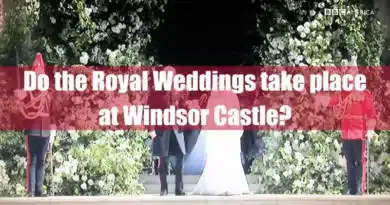
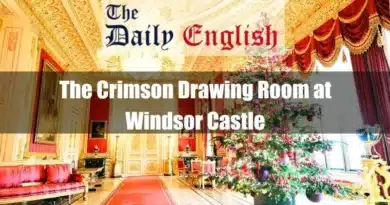
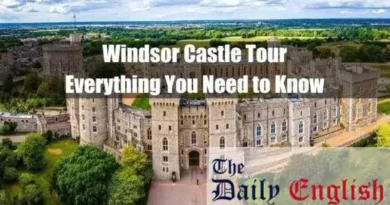
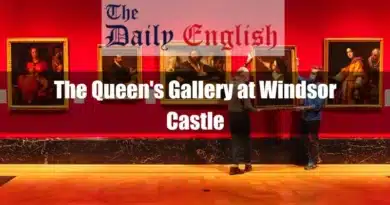

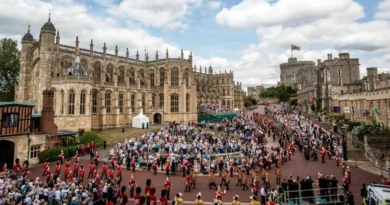
Comments are closed.